The History of the Bridge Trust
The bridge trust has ties going as far back as 1280.
At the time of the Domesday Book Barnstaple was one of only four towns in Devon (with Exeter, Totnes and Lydford). Barnstaple was a walled town and had gates at the north, west, south and east, roughly situated respectively at the north end of the present High Street, the lower end of Cross Street, the south end of the present High Street and the top end of Joy Street.
In the Barnstaple Records reprint by Mr. Wainwright, there is a reference to a Norman road “conjectured and partially traced” running through North Devon, and connecting the north-east parts of the county and the camp at Countisbury with the great one at Clovelly, passing near several other smaller military works. He goes on to say that such a road would necessitate crossing the tidal river or estuary of the Taw at a point where it would be impracticable to ford except at low tide and in fair weather, and “there is great probability that some sort of bridge was built there at a very early period.”
We do know that the bridge was completed before the end of the 14th century since there is a reference to it in an inquisition dated between 1280 and 1300, but in fact it was probably built by 1200 or even earlier. Unlike the bridge at Bideford, the bridge over the Taw was built of stone from the beginning, and not a timber bridge, later of stone. When a contractor was carrying out works to Barnstaple Bridge in 1910, when much cutting into the interior for repairs and service pipes was involved, no timber of any kind was found.
The bridge was of sixteen arches, each with a span of between 18ft. 4in. and 22ft. 6in. (from smallest to largest – each varies slightly). The width of the mediaeval arches from face to face is only 13ft., so that the original roadway can have been little more than 9ft. in width.
After this there was little change in the bridge until 1796, when a widening took place. Up to that date the bridge, as mentioned above, had been very narrow – only suitable for pedestrians and pack-horse traffic.

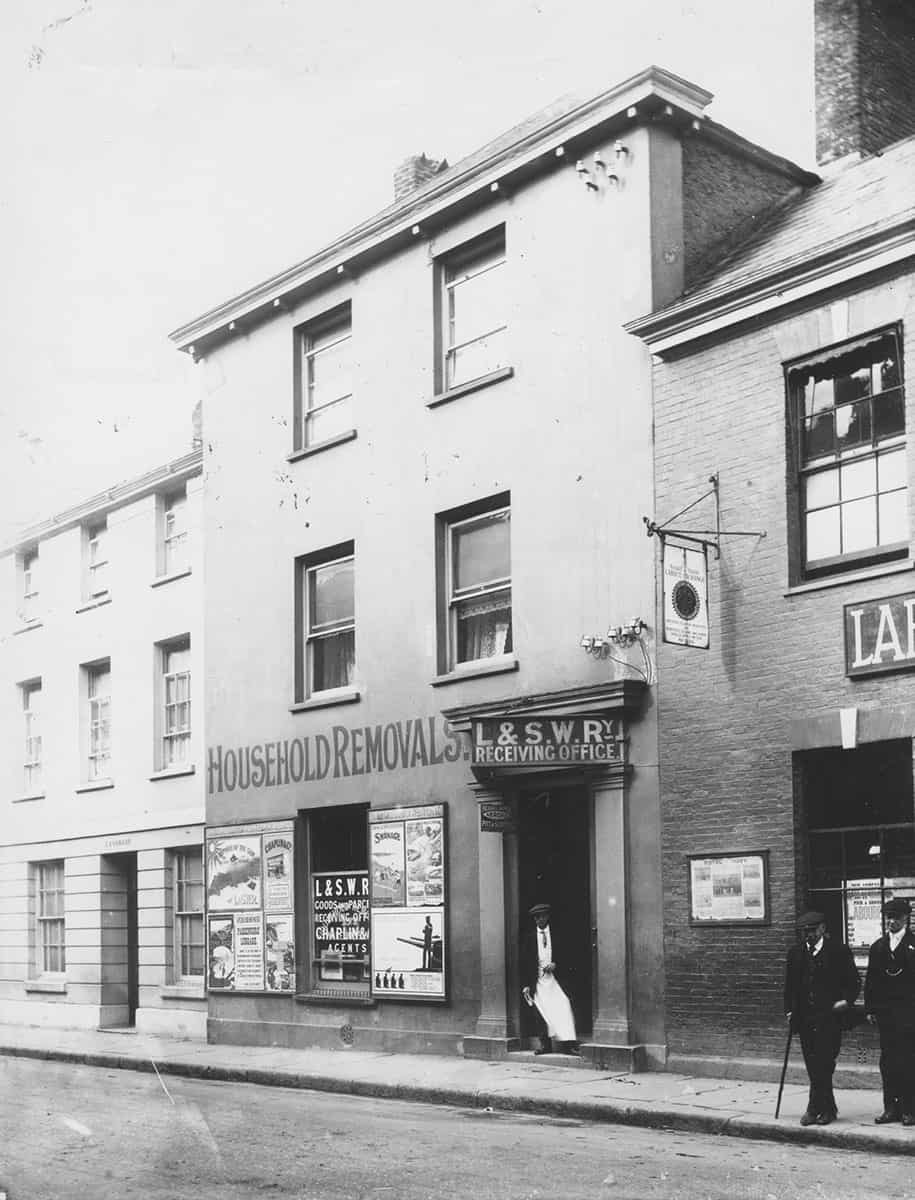
The question of the source of the funds for the initial building of the bridge is as much obscure as the date. The first factual information we have is that Sir Henry de Tracey, Lord of Barnstaple, endowed it with some funds in the 13th century. It could well have been that other local gentry and merchants contributed to the original building cost, since they would clearly have benefited from its existence.
At the end of the thirteenth century the care and management of the bridge appeared to be in the hands of the Mayor and Councillors of Barnstaple, who entrusted two of their number as Wardens to act for them, their duties including both carrying out of necessary repairs and other works to the bridge, and also collecting alms and to render accounts to the Mayor and Council. Throughout the 14th and 15th centuries it appears that the Bridge Wardens received a remuneration for their services.
From the records, it would appear that the monies collected by the Wardens would have included not only rents of lands and buildings, and legacies and annuities, but also contents of a collecting box on the bridge and collections in Barnstaple and surrounding parishes; there is no evidence that tolls were ever levied on the bridge.
Many ancient documents relating to the early periods of the bridge’s history are retained and held in safe custody at the North Devon Athenaeum and by the Bridge Trust; these include early endowment deeds, collecting briefs and various accounts and rentals.

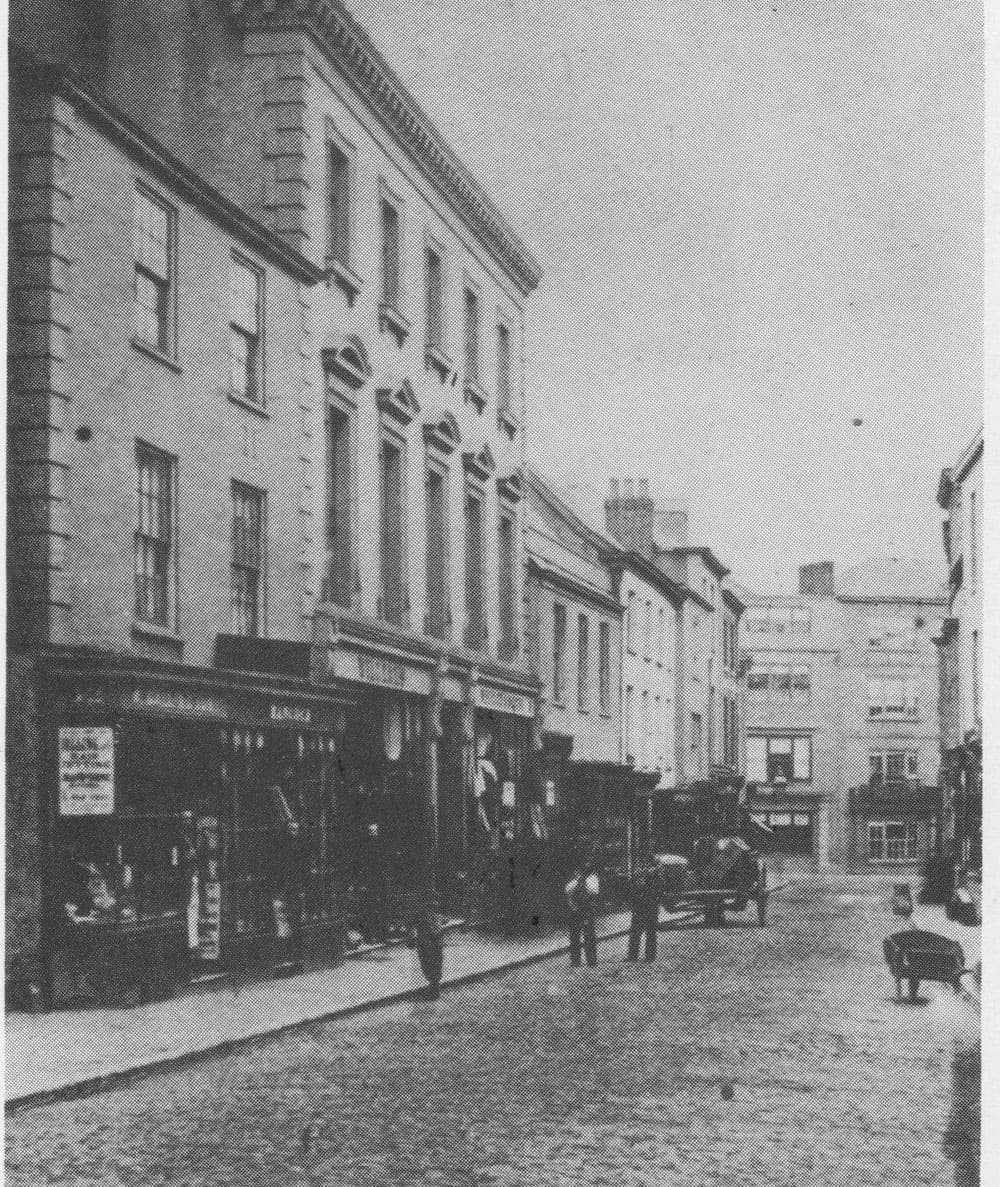
From about 1800 Feoffees began to keep fuller records and the records of the early 1800’s show clearly that the Feoffees of the Long Bridge had become a substantial body financially, and the additional records available enable a more detailed account to be given of their activities.
The first Minute Book of Feoffees’ Meetings commences in 1817 but it was not until 1822 that:
“it is highly expedient that a Minute Book of all the proceedings and Acts of the Trustees of the Long Bridge of Barnstaple at their general meetings should be kept and recorded – that one of the meeting do act as Secretary on the occasion and that the proceedings of the day be signed by the Chairman”
It is clear that the “Bridge Lands” had, by the mid 1800’s, substantially increased, both as the result of land being given and bequeathed to the Feoffees for the “reparation supportation and maintenance of the bridge” and also by the Feoffees having bought various pieces of land, old cottages etc. and built good properties thereon – some still owned.
In 1866, Mr. Cadwallader E. Palmer, the Chairman of the Feoffees and a local solicitor, produced a number of reports one of which describes the management of the Trust saying:
“We have a Treasurer, a Chamberlain or Steward, a Solicitor and Committee of Management. The Treasurer is the Chairman of the Trust. He calls all general meetings. He receives from the Chamberlain all the income, and pays through him all bills that have been examined by the Committee and ordered to be paid. He has hitherto held the situation for an indefinite period, there having been only three Treasurers during the last fifty years. The last Treasurer was Mr. Bremridge, who resigned in November (1865) and Mr. Cotton, Mr. Fisher and myself then consented to act until the present meeting. The Chamberlain is the Steward of the Trust and collects all the rents, and it is his duty to examine and report upon the state of the repairs and superintend their execution under the direction of the Committee.”
The first recorded Chamberlain, John Baker was appointed in 1821 and served in that office until 1860.
In June 1842 a contract was placed with the Gas Company to light the lamps on the bridge (at £3 per lamp per annum – but later increased to four guineas).
From 1838 onwards the Trustees agreed to dine together. This continued for some years, but in 1859 it was agreed that the dinner be not held but £20 given instead to the Committee for decorating the bridge and approaches on the occasion of the Bath and West of England Agricultural Society Meeting in Barnstaple.
In 1862 the sum of £25 was donated to the Albert Memorial Clock Fund.
The Trustees had initially opposed the construction of a railway bridge across the Taw (essentially to extend the railway to Ilfracombe) but, after protracted negotiations with regard to its arrangement and compensation, in 1874 the work took place.
It is also of interest to note that the use of the title “The Bridge Trust” was first used in the Minutes of February 1845.
At the Barnstaple end of the Long Bridge there had been cottages at both sides of the bridge – referred to in the records as “cottages on the bridge”. These were demolished by the Trustees for the construction of Bridge Chambers. Designed by well-known local architect. R.D. Gould, the building was to comprise “a Hall and Chambers” and was completed in 1873. There were considerable discussions as to its occupancy, but finally the hall and rooms were let for the County Court and also for use by the “County Bench” of Magistrates; it was also agreed that the hall should be available for meetings and auction sales; the offices were let to various firms of solicitors and other tenants.
In February 1876 the property of Mrs. Carter at the Bridge End was bought by the Trust. Parts of the land (and the cottages on the bridge) were cleared to widen the approach to the bridge and also further land was ceded to the Town Council to improve the layout of the Square. Mr. R.D. Gould was again employed design a suitable building to harmonise with the Bridge Chambers and to comprise a house fronting the river, and a smaller house with shop facing the Square. Completed in 1878, Bridge End remained in the same form until sold to, and later demolished by, the Ministry of Transport in the early 1960’s.
In 1876, the Trust had purchased “Miss Thorne’s House”, on the south side of the new Bridge End buildings. Some years later it was sold to Mr. W.F. Rock, but “reserving the drainage and watercourse rights through and under, access thereto and all other existing rights, liberties and easements.” Mr. Rock then donated this building to the Rock Trust for use as the North Devon Athenaeum.
In 1882 year two houses in the High Street (Nos. 11 and 12) lying between the Trust’s property (now the HSBC Bank)- and Church Lane.
In March 1887 – the Trust bought “The Literary & Scientific Institution” and exchanged it with the Town Council for two houses and premises in the Strand lying between Bridge House and Maiden Street; this, together with the purchase of a cellar in Maiden Street, enabled the Trustees to complete the Bridge Buildings block much as it is today.
The style and beauty of this building is something of which the Bridge Trust can be justifiably proud, presenting as it does a dignified appearance to those approaching the town from the Exeter and Taunton directions.
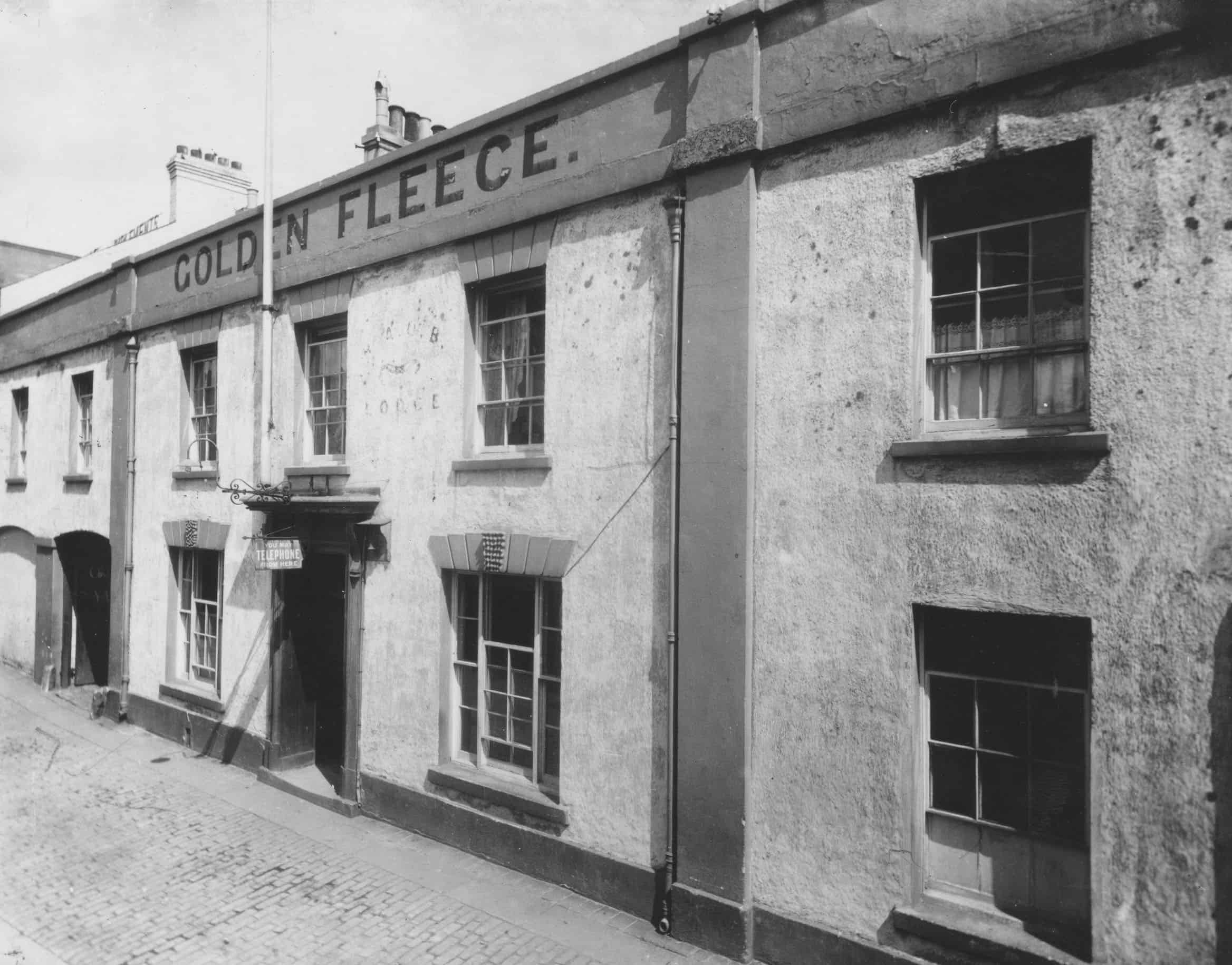

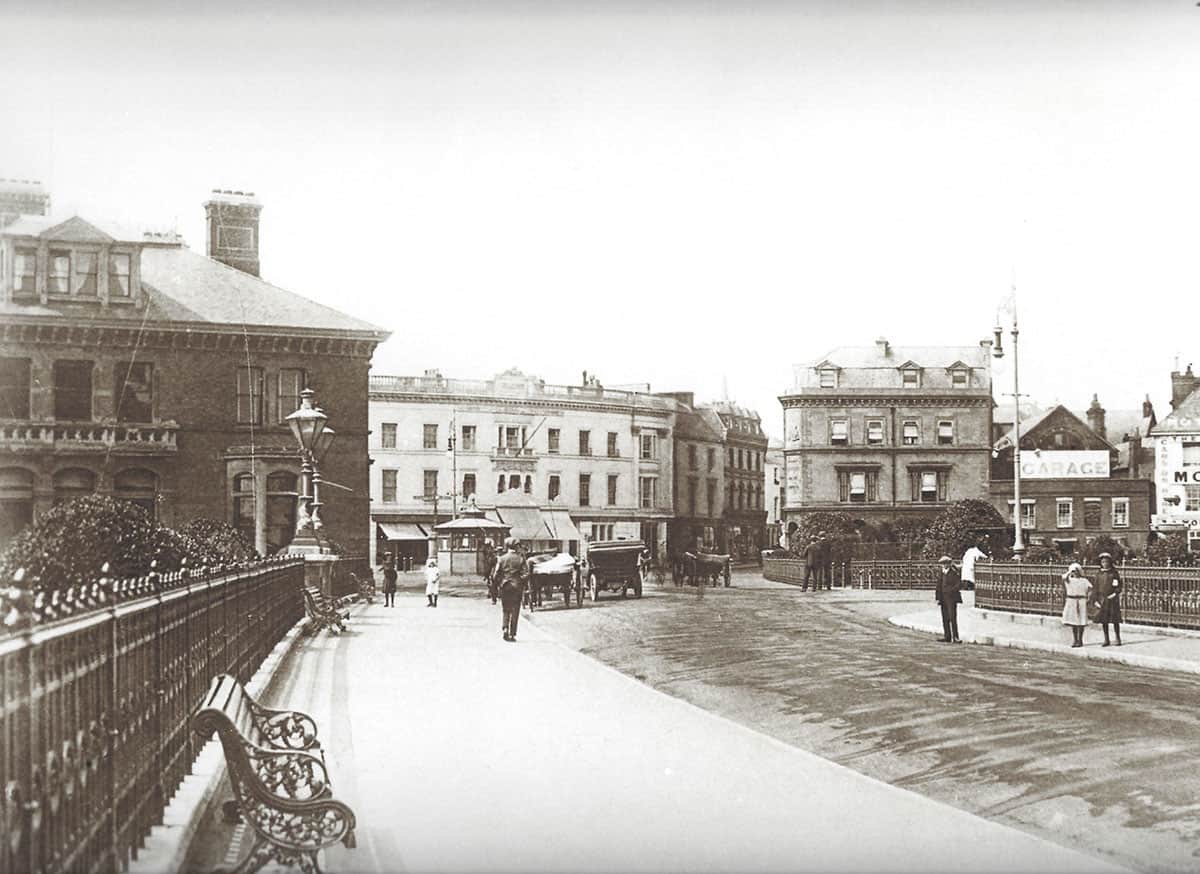

In 1901 Mr. Harry Ashton succeeded his father (Mr. Richard Ashton) as Chamberlain and Theatre Manager, he served the Trust for a record 44 years until 1945.
In 1905 the Trust registered with the Charity Commissioners and became “The Long Bridge Charity”.
Although there is no evidence of tolls ever having been levied on the bridge, in the early 20th century the trustees became very concerned with the possibility of damage by steam traction engines travelling to quickly over the bridge and introduced a fine for speeding. The notices below were erected at each end of the bridge:
“NOTICE
To Owners, Drivers and Persons in charge of Locomotives:
Locomotives in passing over and across Barnstaple Long Bridge must not exceed a speed of two miles per hour, as provided by the Locomotive Acts. Any person found exceeding such speed will be prosecuted under the said Acts.
The penalty for driving at a speed more that two miles an hour is £ 10.
The length of this Bridge is 253 yards. It therefore must not be driven across by Locomotives in less time than 4 minutes 19 seconds.
The fine, ten pounds, is equivalent to £250 in today’s money.
A further “landmark” was reached in 1906 when the Trustees decided to have the bridge lit by electricity instead of the gas lighting that had been in operation for many years. At about this time the National telephone Company was given permission to carry their cable across the bridge, in a pipe through the brackets supporting the pavement on the north side of the bridge.
In 1910/11 a programme, based on a report by the Borough Surveyor (Mr. Y. Saunders), was carried out for substantial repairs and alterations to the bridge roadway. By this time there were both water and gas pipes under the roadway, and these were re-laid as part of the works. Both the Water and Gas Authorities contributed their shares of the costs of the works.
The Theatre, during the early 1900’s, had continued to be run by the Trust, with the Clerk as Manager, and it had been the policy to let the Theatre free of rent (or at a nominal charge) for use for charitable purposes. In August 1910, the Theatre Committee reported an application for the use of the Theatre for “Cinematograph Entertainments”. The Trustees saw no objection to this in principle, and it was then let not only for theatrical performances but also for use as a “Picturedrome.
In 1912 a Properties Committee was appointed to view the Trust’s properties and report necessary repairs. This practice has continued up to the present time and illustrates the importance which the Trustees have always accorded to this aspect of their duties.
In 1914 the First World War began and the Trustees granted permission to the Caretaker (Mr. A.W. Downing) to enlist, and for his wife to act in his place. Mr. and Mrs. Downing had been appointed Caretakers in 1911 when they were given the rooms at Bridge Buildings free of Rates, at a rent of 4s. per week. Their duties were quite extensive, and included:-
- Sweeping the bridge daily.
- Acting as caretakers of Bridge Chambers, lighting and extinguishing the passage lights daily, opening the Chambers at 7 a.m. and closing them at 10 p.m. (6 p.m. on Sundays).
- Acting as caretakers of the Bridge Hall and Trustees’ Room, and cleaning the Chambers and Hall as necessary.
- Acting as caretakers and cleaners of the Theatre and acting as cloakroom attendants for dramatic entertainments.
- and Any other duties by order of the Chairman or Clerk.
In October 1914 the 6th Battalion The Devonshire Regiment was given permission to use the Bridge Hall for lectures (but not for P.T. as this would disturb the occupants of the adjoining offices!) and in 1915 the free use of the Hall was given for medical examinations and attestation of Navy and Army recruits.
In August 1915 the Clerk (Mr. Ashton) was granted leave of absence from his duties as Clerk (and Manager of the Theatre) during the continuation of the War as Lt.-Col. Ashton) he was in charge of the Recruiting Office in Barnstaple.
In 1915 the Clerk discovered a map, dating from 1772, in a local Solicitor’s office and purchased it for 105s 6d.; it was framed and now hangs in the Bridge Trust Board Room.
In December 1917 Mr. George Loosemore was appointed to “give a general oversight to the properties of the Trust”. Loosemore’s remained the trusts builders for four generations up until a few years ago.
The Bridge Hall was being regularly let for auction sales and this continued for many years. In February 1922 the Golden Fleece (now the Fulham Chinese restaurant) and cottage adjoining were sold, with the consent of the Charity Commissioners, and early in 1923 the adjoining stores in Tuly Street were also sold.
In October 1928 attention was drawn to the fact the 1905 Scheme of the Charity Commissioners referred to a “Clerk” whereas hitherto this Officer of the Trust had always been designated “Chamberlain”. On writing to the Commissioners a reply was received dated 17th October 1928 stating that:-
“No sanction of the Commissioners is required to the proposal that the Clerk should be called the ‘Chamberlain’. There is nothing in the Scheme of 11th July 1905 to preclude the Trustees from using this title.”
It was therefore resolved by the Trustees to revert to the title of “Chamberlain”. (However, the 1961 Scheme – the current one – refers specifically to John Bryon Cruse (by name) as the “Clerk”.)
In 1930 the tenants of the Theatre Royal made an offer to purchase the building, with the agreement of the Charity Commissioners, the Trustees accepted the offer and thus the long connection of the Bridge Trust with matters theatrical came to an end.
In 1935 it was reported that boys had been found damaging the Bridge Trust Boat. This had been bought some years before for use in inspecting and working on the bridge piers and arches. The report stated that when spoken to they made use of foul language. Two of them were summoned and fined four shillings each plus two and sixpence each towards the damage (with fourteen days to pay!)
Mr. Ashton, the Clerk, stated in January 1941 that he wished to resign on grounds of ill-health, but in February he was prevailed upon to withdraw his proposed resignation on it being agreed that he bring his Clerk (Mr. Watts) to meetings to assist him, and to deputise for him at any meetings which he was not able to attend.
In July 1945, Mr Ashton wrote to say that after forty four years’ service, he was unable, owing to age and ill-health, to continue his duties as Clerk. The Trustees reluctantly accepted his resignation, Mr Ashton died 4 years later in 1948.
In early 1950 the Trustees decided to sell Nos. 7 and 8 High Street and Pengelly’s Court which they had purchased in 1939. During the War years the empty and condemned cottages in the Court had been used by the Town Council to accommodate evacuees, but this use had now ceased and the cottages reverted to their “condemned” status.
In 1950 the Western Area Traffic Commissioner (Sir Arnold Musto) had written to the Trustees expressing anxiety, that new maximum vehicle widths of 8ft. could cause danger because of the width of the bridge roadway. In fact this was only just over 16ft and the Trustees envisaged the possible consequences of vehicles mounting the footpaths – which were of course only on cantilever brackets.
In 1951 the Trustees decided to write to the Ministry of Transport stating that they were in favour, in principle, of bridge widening if satisfactory financial arrangements for grants etc. could be made, including accepting liability for damage to the bridge and third party claims due to the use of the bridge by the wide vehicles now to be permitted, and to indemnify the Charity generally against all claims. The Ministry promptly replied refusing to accept any responsibility or give any indemnity in connection with use of the bridge by wide vehicles, but said that they were still investigating the whole question of what steps could be taken to deal with the problem. In November 1952 the Ministry had said that “the present is not a propitious time” for putting forward a scheme for widening, to which the Trustees replied that they considered that the time had come for action on this matter. A further meeting with a Ministry official took place in March 1953, at which representatives from the Police and Devon County Council were also present: the Trust representatives stated that they considered the only practical solution was to widen the bridge, as distinct from building a new one.
After many meetings and long discussions, in 1957 a letter was received from the Ministry of Transport stating that the manner of the proposed widening of the Long Bridge had been agreed with both the Ministry of Works (Ancient Monuments Branch) and the Royal Fine Art Commission, and asking if the Trustees would consider transferring the bridge to the Minister of Transport under the Bridges Act 1929, on terms to be agreed. The Trustees felt that as widening of the bridge was essential to the interests of the Borough, and as it now appeared that the Minister of Transport would be prepared to proceed fairly soon with a widening scheme if control of the bridge passed to him, it was their duty to ask the Charity Commissioners for approval to accede to the transfer; the sale was completed in 1961.
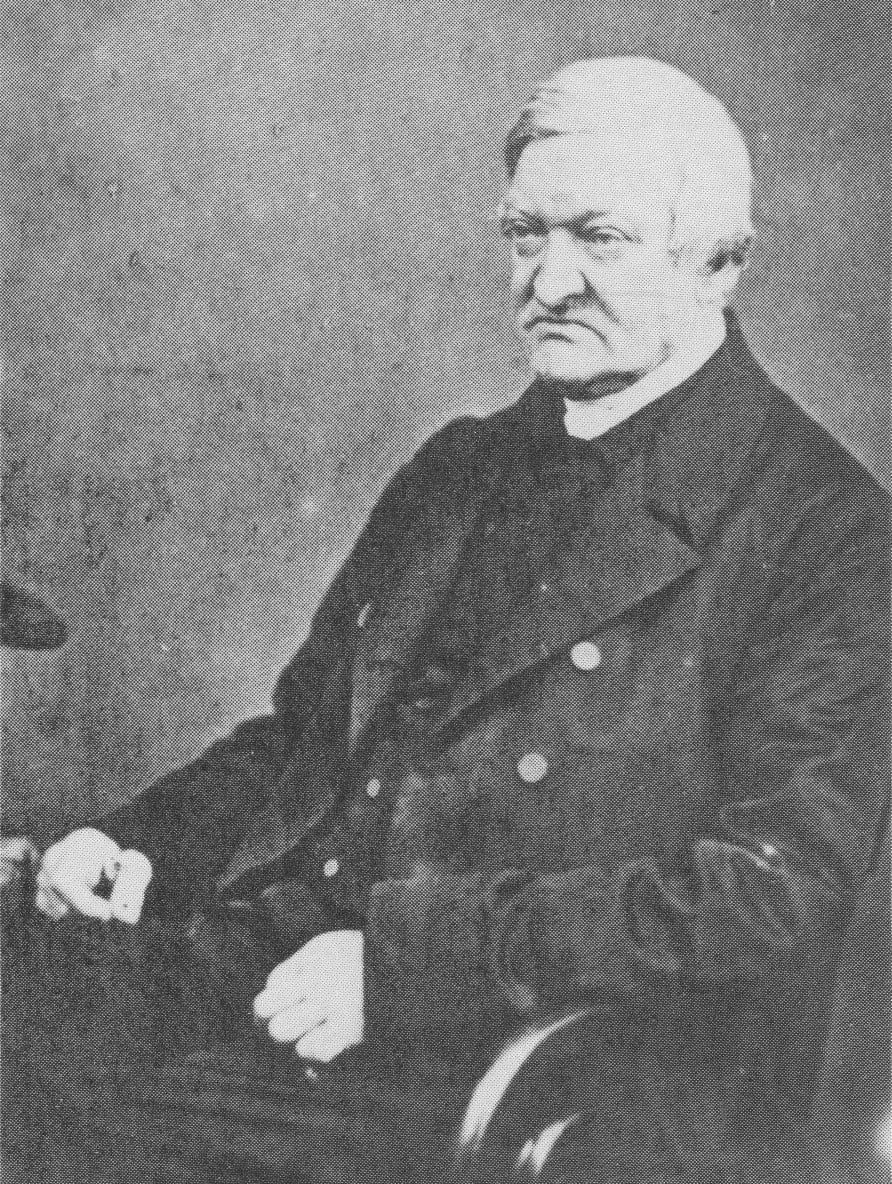



The Charity Commissioners’ made an order on the 4th April 1961 creating “The Bridge Trust”-(the same title that had been used prior to 1905). In May 1961 the Ministry of Transport needed to buy the Bridge End property from the Trust in connection with the widening scheme although the sale was not completed until 1961.
In April 1960 the Devon County Council gave up their tenancy of the Bridge Hall and Ante-room which they had had ever since the building of Bridge Chambers in the 1870’s. During the whole of the 90 years or so the Hall had been used both as Court Rooms by the County Council as well as by the Trustees for casual lettings for auction sales etc.: this was the principal venue in Barnstaple for such sales. As in 1960 there appeared to be no requirement for the Hall, it was then let, with appropriate alterations by the tenants, for use as solicitors’ offices.
In 1962 the Trustees applied to the Charity Commissioners for the Charity to be registered under the new Charities Act 1960, and the registration was effective on 30th March 1962.
Under the scheme which still governs the Trust, Trustees are to consist of:-
- 10 Co-optative Trustees – Persons residing or carrying on business in the “area of benefit”
- 5 Nominative Trustees – Persons appointed by the Borough Council of Barnstaple
- 1 Ex-officio Trustee – The Mayor of the Borough of Barnstaple.
The “area of benefit” was defined as the Borough of Barnstaple and immediate neighbourhood – but as there now is no Borough, the Town Council appoints the Representative Trustees, the Town Mayor is the Ex-officio Trustee, and “the area of benefit” is defined as being within a 5 mile radius of the Barnstaple Guildhall.
Rules are laid down for the appointment etc. of trustees, meetings and proceedings of trustees, and the management of properties (called “lands” in the Scheme). In addition, rules are laid down for the “application of income”. The latter can be briefly summarised as follows:-
The income is first to be applied in paying for repairs and other outgoings on the property of the Charity, and for all expenses of management and thence applied as:
- Grants for public purposes Provision of amenities
- Gifts for poor inhabitants Grants to charities (with object being relief of poverty)
- Grants to charities (with object of public purposes)
